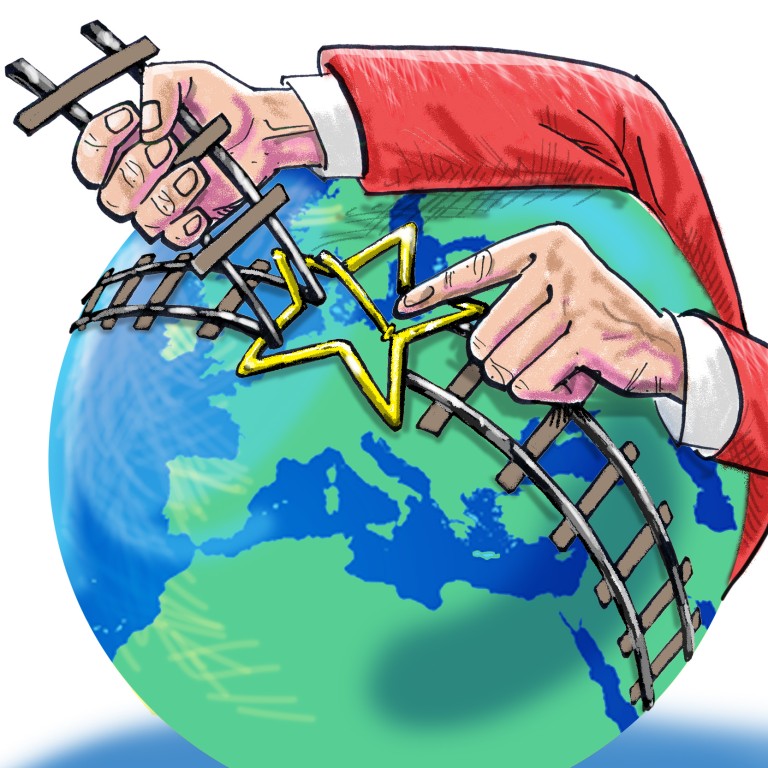
China’s developing connectivity to its neighbours is a story of epic proportions
George Yeo says China’s connections to Eurasia, through its ‘One Belt, One Road’ initiative, will drive future growth
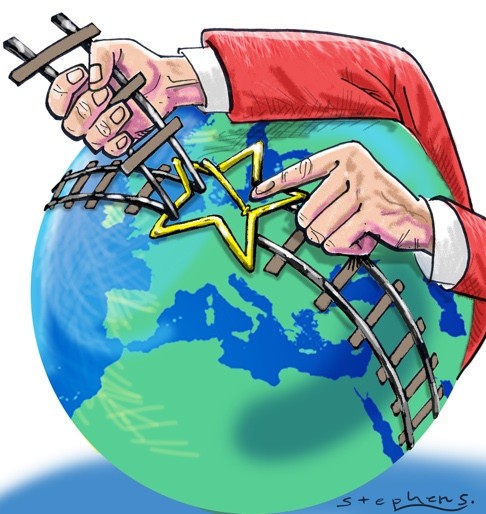
Yes, China fumbled. It could have avoided certain obvious mistakes which many saw coming, but the Chinese will learn from it. What the episode shows is how the relative weights are shifting in the world way beyond just trade.
China still accounts for less than 15 per cent of global gross domestic product, but its contribution to global growth last year was in the range of 40 per cent. So when that growth slackens, pretty much everyone around the world feels it.
China’s prospects are good. The closer you are to China, the more you feel that
Not surprisingly, people all over the world are concerned about China’s prospects. Is this the beginning of a decline? Are the internal contradictions sharpening, portending further, more serious problems? In my view, China’s prospects are good. The closer you are to China, the more you feel that. The more you visit China, the more you realise that, despite all the problems, the country is organically still in the phase of growth.
In terms of aggregate demand, it will take many more years before the Chinese economy has a big enough domestic consumption sector to replace investment as the principal driver – and that consumption must increasingly shift to services.
Coastal China has become very expensive, so the factories that were in China for quite some time have moved to Southeast Asia. The Chinese government wants to move some of them inland to develop inner China. These are long-term trends.
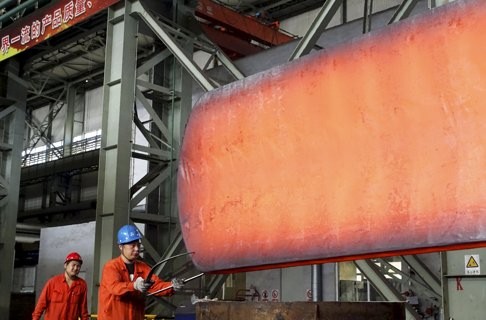
This is why President Xi Jinping’s (習近平) “One Belt, One Road” initiative is of huge importance – not as an immediate plan, but as a long-term approach towards China’s development.
To begin with, China has all this excess capacity – in steel, cement, factories producing rolling stock and so on – which can be applied to great use linking China to its neighbours. This growing connectivity to its neighbours deep into Eurasia is a story of epic proportions, which is why we should follow it closely.
INFOGRAPHIC: How One Belt, One Road will give China’s developing neighbours easier access to Chinese-made products
Consider that, earlier this year, China established a rail link to the Persian Gulf via Kazakhstan, Turkmenistan and Iran. With the opening of Iran, the dynamics across a large part of Asia will change.
Remember that, throughout history, Imperial China and Imperial Persia always had good relations – two high civilisations maintaining peace in the region. You will see this relationship revivified, not least in view of pent-up demand in Iran.
But China, ever a comprehensive, long-term planner, is proposing or already executing enormous railroad expansion – to the Gulf of Thailand, the Andaman Sea, the Arabian Gulf, the Black Sea, the Baltic Sea and all the way to the North Sea.
Early this year, China and Russia agreed in principle to build a fast train connecting Moscow and Beijing, probably through Kazakhstan. The distance between these two cities is 7,000km, and the journey is supposed to take less than two days!
How can one justify such an investment? Of course, one cannot – if one just looks at the proposition on the basis of earnings from freight rates and passenger fares. But all these calculations change profoundly if, along the way, one builds a belt of cities.
READ MORE: Beijing pledges support for Hong Kong in ‘One Belt, One Road’ regional economic development strategy
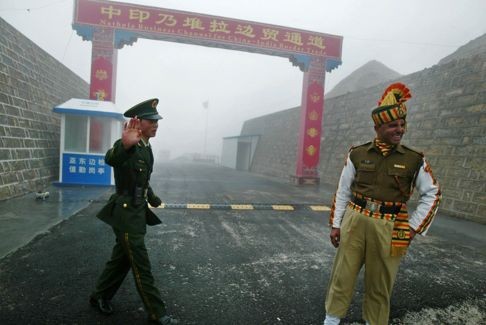
Eurasia is a large part of the world, and it will, in a few decades from now, be the principal driver of the global economy.
When Indian Finance Minister Arun Jaitley was asked how India could benefit from the crash in the Shanghai stock market, he replied that India did not see relations in zero-sum terms
This is why the Asian Infrastructure Investment Bank (AIIB) is so important. Many analysts saw its establishment as a power move against the United States, contesting the Bretton Woods institutions.
That may be a collateral effect but is not the main purpose of the AIIB, which is an absolute economic and financial necessity. Even so, this new institution can only supply a small part of what is required to finance all the infrastructure needed, which will be in the trillions of dollars.
Although it is not yet said, one day we may find the Chinese rail system and Indian rail system linking up through the Nathu La pass. It is a gap of a few hundred kilometres and shorter than the one between the Chinese and Pakistani rail systems which are being connected. Politically, the time is not right to talk about it, but watching the developing relations between China and India, it is no longer something to be dismissed.
The development of China-India relations is of great historical importance because of their large populations. Together, they comprise some 40 per cent of the world’s population. When Indian Finance Minister Arun Jaitley was asked recently how India could benefit from the crash in the Shanghai stock market, he replied that India did not see relations in zero-sum terms. He added that China’s growth was good for India and vice versa.
READ MORE: How China successfully redrew the global financial map with AIIB
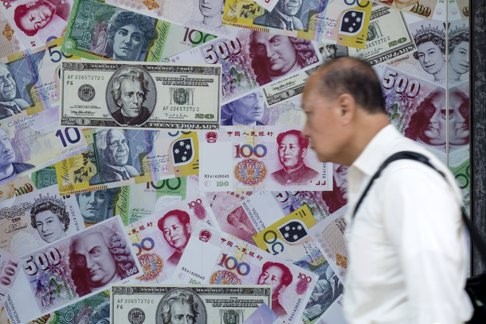
The internationalisation of the renminbi is a case in point. This is not an easy manoeuvre to execute. The Chinese are now attempting to create two separate oceans of renminbi – one within China, which is the much larger one, and another outside China.
The two are connected through portals like Hong Kong and, to a lesser extent, Singapore. Between the two oceans are tidal barrages like the ones protecting Venice. If there is financial turbulence outside, the barrages can come up to protect the inland ocean until the storm subsides. The engineering is obviously complex and may not be foolproof.
READ MORE: Yuan internationalisation would rewrite global monetary order
Why can’t China allow the internationalisation of other currencies like other major countries? To understand this, we have to go back to the long history of China and the difficulty of governing a large part of the world’s population. Whoever governs China must always be able to exercise some control over its own internal destiny.
In the second half of the 19th century, after the second opium war, any ship landing on the Chinese coast was inspected by Western customs officers. By the late Qing dynasty, China had lost control of its monetary system and therefore an important part of its sovereignty. China will not allow this again. But managing the renminbi properly will not be easy. Mistakes will be made, but the Chinese are learning. It is a deep imperative.
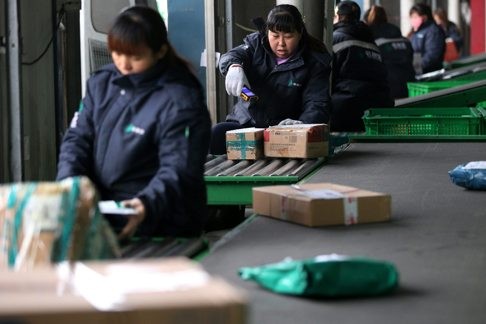
That the slowdown in China is causing alarm around the world is because of the lack of aggregate demand powering the global economy. Despite easy money in the last seven years, the global economy has still not performed well. Europe is still floundering. The United States is looking better but the Federal Reserve’s nervousness cannot be without reason. Better policy coordination with China will help but there’s no guarantee the global economy may not plunge into another crisis. It will take many more years before the Chinese economy, together with other developing economies, become big enough to make up for insufficient demand in the mature economies.
READ MORE: Growing pains to be expected as China works to join the club of developed economies
China is probably the only major country in the world today which is able to exercise a national will on a range of subjects. This is principally because the economy is still in a late adolescent phase and partly because the political culture over the centuries accepts centralised governance.
For example, when Xi promulgates “One Belt, One Road”, the message percolates right down and funds are allocated. The countries involved know it is credible because it is backed by a strong national will.
There is much talk about the South China Sea becoming a flashpoint. Yes, the South China Sea is important, but it is not the most important issue. It is a trial of strength between the US and China but one which both sides will be careful not to mismanage. The most important issue is still the global economy, because if we get that wrong, everything else is in danger.
George Yeo, a former foreign minister of Singapore, is chairman of Hong Kong-listed Kerry Logistics Network, and vice-chairman of the Kerry Group. This is an edited version of a speech he gave at the recent Singapore Summit

